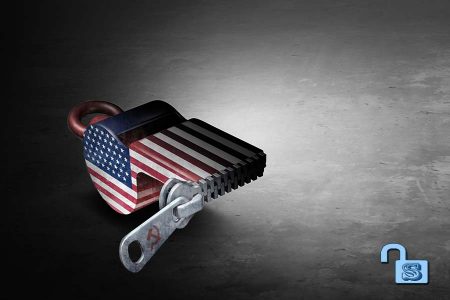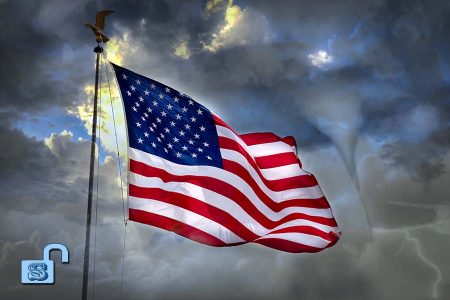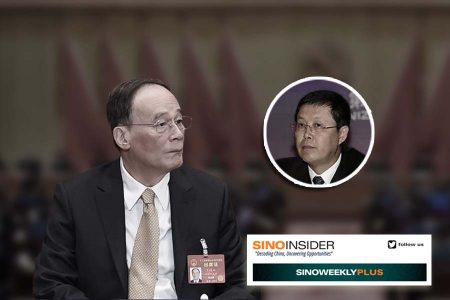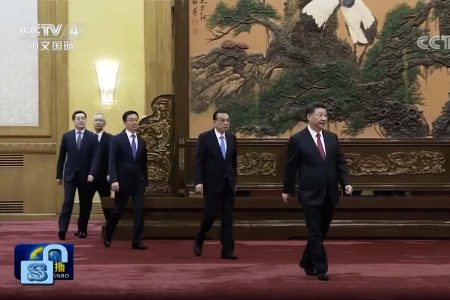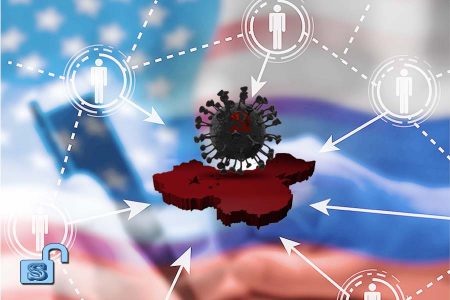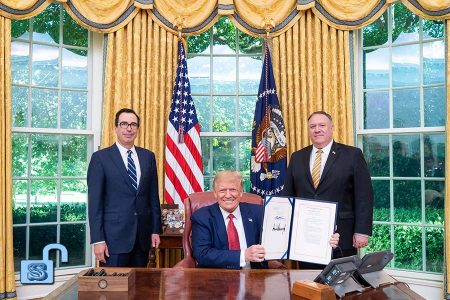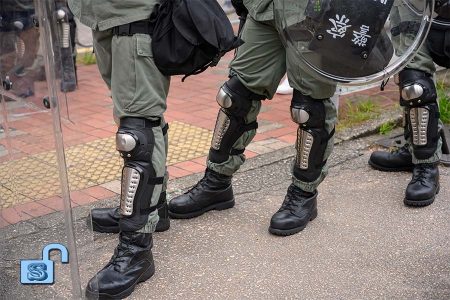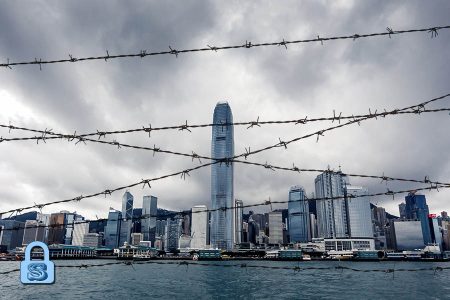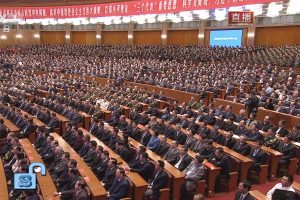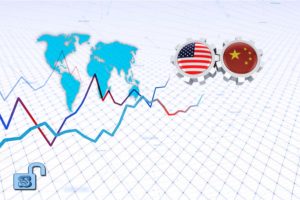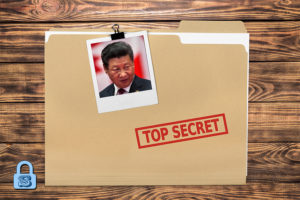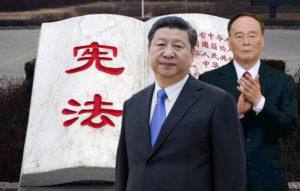◎ Kim may want a second meeting with Trump sooner rather than later.
North Korean leader Kim Jong Un and South Korean president Moon Jae-in held a third meeting in Pyongyang from Sept. 18 to Sept. 20. On Sept. 19, the two leaders signed a joint agreement which the South Korean side has characterized as a proclamation to end the Korean War.
United States President Donald Trump remarked that several items in the Pyongyang Declaration are “very exciting.” Later, U.S. Secretary of State Mike Pompeo announced that negotiations with North Korea would restart “immediately.” In August, Trump had declared a freeze in denuclearization talks because he felt that the People’s Republic of China (PRC) wasn’t cooperating with United Nations sanctions on North Korea.
In assessing the third Kim-Moon meeting and the official reaction from the U.S. and South Korea, we believe that Kim Jong Un has now set the Democratic Republic of Korea (DPRK) irreversibly down the path of complete denuclearization. The Trump administration can leverage on upcoming negotiations to consolidate the progress made at the Kim-Moon meeting to advance the denuclearization and peace process.
The backdrop:
Sept. 10: The White House announced that Kim Jong Un had sent a letter requesting for another meeting with President Trump. Sarah Sanders, the White House press secretary, said that Kim’s letter was “very warm” and “very positive.” She added that the letter was “further evidence of progress” in the relationship between Kim and Trump.
Sept. 18: Moon Jae-in arrives in Pyongyang, and is greeted by Kim Jong Un with hugs and handshakes. Moon and Kim rode in an open-air Mercedes limousine, and waved to nearly 100,000 cheering North Koreans lining the streets chanting “unification” and “motherland.”
During a two-hour meeting, Kim thanked Moon for helping to bring about the historic summit between him and President Trump in Singapore. “Thanks to that, the political situation in the region has stabilized and I expect more advanced results,” Kim said. Moon thanked Kim for his “bold decision to open a new era”.
Moon brought a 52-member civilian entourage with him to Pyongyang. The entourage consisted of nearly a dozen South Korean businessmen, including the chiefs of Samsung Group, LG Group, SK Group, and Hyundai Group. The businessmen met with North Korean deputy prime minister Ri Ryong Nam, who is in charge of economic affairs. Also included in the entourage were athletes and South Korean K-pop stars. Some of the South Korean artists visited a children’s hospital and a music university in Pyongyang with Kim Jong Un’s wife.
Sept. 19: After a 70 min-long private meeting, Kim and Moon sign the Pyongyang Declaration and held a joint press conference to affirm the goal of denuclearizing the Korean Peninsula.
According to the Declaration:
- Both sides agree to cease hostilities in regions of confrontation such as the demilitarized zone (DMZ) and work towards the “substantial removal of the danger of war across the entire Korean Peninsula and a fundamental resolution of the hostile relations.”
- Link railroads and land roads between the North and the South within the next year.
- Open a permanent facility for family reunion meetings.
- Actively promote exchanges and cooperation to “enhance the atmosphere of reconciliation and unity,” including participating together in the 2020 Summer Olympics and submitting a joint bid to host the 2032 Summer Olympics.
- Turn the Korean Peninsula into “a land of peace free from nuclear weapons and nuclear threats,” and make “substantial progress” towards achieving this end. This includes permanently dismantling the Dongchang-ri missile engine test site and launch platform under international observation, as well as the Yongbyon nuclear facilities. The U.S. is expected to take “corresponding measures” in accordance with the Singapore Summit on June 12.
- Kim Jong Un would visit Seoul “at an early date” at the invitation of Moon Jae-in.
A spokesman of South Korea’s Blue House (Cheong Wa Dae) said that the “leaders of the South and the North have in fact announced the end of the war on the Korean Peninsula by their agreements.”
At the press conference to announce the Declaration, Kim said that he and Moon “agreed to make efforts to turn the Korean peninsula into the land of peace without nuclear weapons or nuclear threats.”
Meanwhile, the defense ministers of the two Koreas signed an agreement to reduce military tensions. The agreement includes measures like halting artillery and other military drills near the demilitarized zone, dismantling heavily armed guard posts in the DMZ by the year’s end, creating a maritime peace zone in the Yellow Sea, and forming a North-South joint military commission.
Moon said: “The era of no war has started. Today the North and South decided to remove all threats that can cause war from the entire Korean Peninsula.”
In the evening, Moon Jae-in addressed a packed May Day Stadium (150,000 capacity), the first time a South Korean leader gave a public speech to North Koreans. Moon introduced the Pyongyang Declaration, and said that he and Kim “have pledged to give a nuclear weapon-free and nuclear threat-free peaceful land to the next generation.”
“Kim and I will firmly hold the hands of the 80 million Korean people and will make a new fatherland,” Moon added. He received a standing ovation.
Referring to the Pyongyang Declaration, President Trump tweeted: “Kim Jong Un has agreed to allow Nuclear inspections, subject to final negotiations, and to permanently dismantle a test site and launch pad in the presence of international experts. In the meantime there will be no Rocket or Nuclear testing. Hero remains to continue being returned home to the United States. Also, North and South Korea will file a joint bid to host the 2032 Olympics. Very exciting!”
In a statement, Secretary of State Mike Pompeo congratulated Moon and Kim on their summit in Pyongyang. Pompeo welcomed the dismantling of the DPRK’s nuclear facilities “in the presence of U.S. and IAEA inspectors,” as well as the missile engine test site, and said that U.S. is “prepared to engage immediately” based on North Korea’s “important commitments.”
Pompeo also invited North Korean foreign minister Ri Yong Ho to meet him in New York in the week of Sept. 24, where they are both scheduled to attend the U.N. General Assembly meeting. “This will mark the beginning of negotiations to transform US-DPRK [North Korea] relations through the process of rapid denuclearisation of North Korea, to be completed by January 2021, as committed by Chairman Kim, and to construct a lasting and stable peace regime on the Korean Peninsula,” he said.
Sept. 20: Moon Jae-in and Kim Jong Un visit Mount Paektu, a sacred mountain in DPRK propaganda and Korean folklore. The two leaders posed for a picture with smiles and raised hands atop the mountain.
Back in Seoul, Moon told reporters that Kim wants Secretary Pompeo to visit Pyongyang for more talks, and also wishes to meet with President Trump for a second summit. “Chairman Kim expressed his wish to finish complete denuclearization at an early date and focus on economic development,” he said.
Moon added that he will pass a private message from Kim to Trump when he meets the latter at the UN General Assembly meeting next week. The message includes “items that we did not include in the joint declaration,” he said.
Moon said that North Korea is open to outside inspections of the nuclear-testing site which it destroyed in May. He added that the signing of a peace declaration between North Korea and the U.S. would be a purely political statement and is not legally binding, which means that South Korea would not ask U.S. troops to leave. Moon also noted that a peace treaty to end the Korean War cannot be signed until the DPRK completely abandons its nuclear weapons.
Meanwhile, PRC state media reported that Chinese foreign minister Wang Yi supports the Pyongyang Declaration, and said that the denuclearization of the Korean Peninsula and downgrading of hostilities are very great accomplishments. On the same day, the Beijing-based Duowei News reported that the Liaoning local government has come up with a detailed plan for working with North Korea. The plan includes the establishing of a “Dandong Special Zone” and the building of highway, railroads, and information networks to connect Dandong, Pyongyang, Seoul, and Busan.
Our take:
1. Back in March, we predicted that Kim Jong Un would denuclearize North Korea and seek to end the Korean War to preserve his rule in the face of America’s “maximum pressure” campaign. We noted that Kim’s “biggest headache” would be selling denuclearization to DPRK elites and his people, especially given the political and cultural constraints of authoritarian North Korea. In other words, Kim’s first steps towards complete and irreversible denuclearization must be to curb internal opposition and irreversibly shift the people’s mindset toward accepting a non-nuclear, peaceful Korean Peninsula. Only then can he start on the physical process of dismantling nuclear weapons.
Should Kim fail to win over the elite or sufficiently prepare the people for denuclearization and peace, the cutthroat nature of the DPRK regime puts him at very real risk of being overthrown and executed. And if Kim is ousted, the incoming regime might not be too accommodating to U.S. and South Korean diplomacy. Détente or destabilization of the region would ensure.
The Trump administration and the Moon government are likely aware of the DPRK’s political culture, and have thus far worked to create an external environment conducive enough for Kim Jong Un to go ahead with denuclearization without having to worry about his safety. Apart from being important trust-building measures, the meetings that Trump and Moon have had with Kim allow him to shift DPRK propaganda, shore up domestic political support, and speed up the process towards physical and irreversible denuclearization.
The third Moon-Kim summit is particularly defining in definitively shifting the North Korean mindset towards accepting a new political reality. Moon was virtually placed on even footing with Kim in a high-profile manner, such as during the open-air limousine ride, the stadium announcement, and the trip to Mount Paektu. Meanwhile, demilitarization, peace and unification were core themes of the meeting. Moon’s civilian entourage, which included the chiefs of top South Korean companies, athletes, and K-pop stars, is yet another teaser of sorts for Kim and the DPRK to remind them of the strong economic prospects and deeper cultural exchanges to be had between the two Koreas. The plan for a joint Korean team to participate in the 2020 Summer Olympics and for both Koreas to submit a joint bid for the 2032 Summer Olympics appears to be aimed at using athletic “reunification” as a stepping stone toward full reunification. And while the Pyongyang Declaration stops short of formally announcing an end to hostilities, Cheong Wa Dae’s comment that the Declaration was essential and “end of war” statement by Kim and Moon.
Taking the various symbolic gestures at the latest Moon-Kim meeting on the whole, it seems that Kim Jong Un is very likely making a genuine effort to acclimatize his people towards accepting a united and peaceful Korea, with the implication that nuclear weapons will not be necessary (and hence can be quietly disposed of) for guaranteeing regime survival in the “era of no war.” Indeed, there is a strong case to be made that Kim has nudged the DPRK into irreversible denuclearization territory by hosting Moon and involving the North Korean masses in historic and prominent proceedings.
2. The Trump administration is staffed with many realists, and Trump’s National Security Strategy (NSS) talks about pursuing a “strategy of principled realism.”
Contrary to the popular view that the U.S. is being “played” by the DPRK, the plan to denuclearize North Korea by maintaining America’s tough stance (“principled”) while remaining flexible enough in negotiations to “game” the DPRK’s political culture and system (“realism”) is 21st-century realpolitik par excellence.
3. The more committed Kim Jong Un is towards the U.S. denuclearization plan, the lesser leverage the People’s Republic of China (PRC) has over the DPRK. Historical bad blood between the two regimes means that the DPRK does not enjoy being the PRC’s “puppet” (see here and here). Ideology-wise, the ruling elite in both regimes do not appear to truly believe in communism anymore outside of propaganda uses. And with Sino-U.S. trade war having a detrimental effect on China’s economy and the PRC losing clout internationally as more and more countries are introducing measures to guard against CCP influence operations and expansionism, the DPRK has even fewer reasons to stick rigidly to a Cold War-era alliance.
Once a peace treaty is signed, North Korea would be more inclined to drift into South Korea’s orbit, given their shared cultural heritage. And being in South Korea’s orbit means that North Korea would naturally gravitate towards the U.S. and away from the PRC.
If the Chinese Communist Party (CCP) continues to be stubborn in the Sino-U.S. trade war, the PRC might end up being the biggest and only loser among the four parties that would be involved in the signing of a peace treaty to end the Korean War.
4. Reports from the mainland suggest that the CCP is preparing for the opening up of North Korea. This indicates that the CCP might have already considered Korean reunification and denuclearization to be fait accompli, and is instead looking ahead to shape and control that outcome.
The CCP’s plans for post-reunification and nuclear Korea are almost certainly different from what South Korea and the U.S. would want. However, what the CCP wants North Korea to do and what North Korea would end up doing might turn out to be very different. Moreover, the U.S. would insist that the DPRK follow its lead on denuclearization and reunification to ensure continued good faith in the process and build trust between both countries. While North Korea would very likely seek ways to get the best out of both parties, it would ultimately pivot towards the U.S. because it has greater economic and political incentive to do so.
What’s next:
Kim Jong Un would likely want a second summit with President Trump sooner rather than later. This is because the Sino-U.S. trade war is looking like a prolonged conflict, and North Korea cannot afford to wait endlessly to push ahead with much-needed economic development.
We believe that it is in the political interest of both Trump and Kim to have a second summit before the U.S. midterm elections. A successful summit would grant Trump a political boost domestically. And if Trump sets up the meeting right, Kim would emerge from the summit as having secured another political “victory” which he can leverage on to actualize the technical aspect of denuclearization. The signing of a declaration to end the Korean War, with an agreement to sign a formal peace treaty once North Korea achieves complete denuclearization, should be enough of a political guarantee for Kim to bring home and take further action on his part.
We expect that our March prediction of a denuclearized and peaceful Korean Peninsula to come to pass, and likely before the January 2021 deadline set by Secretary Pompeo. Depending on the pace of negotiations for the signing of a peace treaty agreement, North Korea could fulfill the crucial steps towards irreversible and complete denuclearization by as early as the end of the year.
Get smart:
SinoInsider correctly predicted that the Singapore Summit would still be held in June after President Trump scrapped it following North Korean shenanigans in May because we have a thorough understanding of how communist regimes like the DPRK and the PRC operate.
What does a nuclear-free, peaceful Korean Peninsula mean for North Korea, China, and your business? Contact us.

